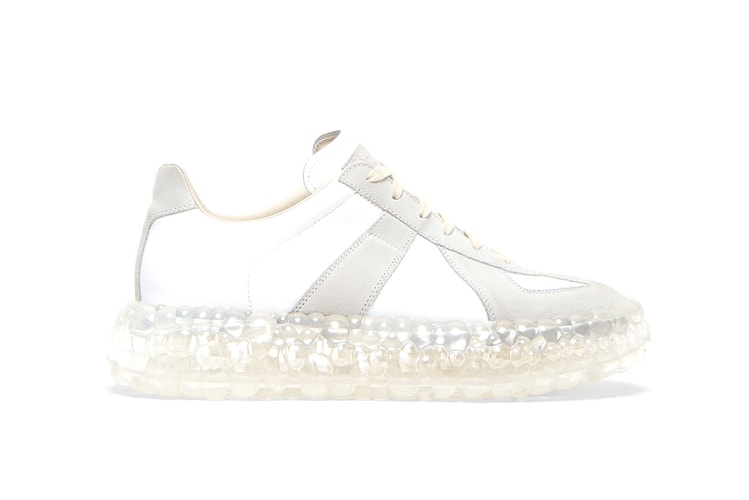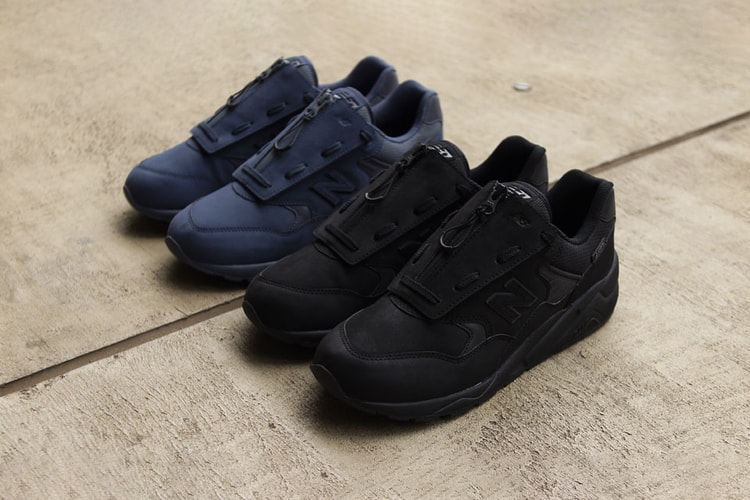

For every action, there’s an equal and opposite reaction. Often, the struggle upstream is what drives progress: the struggle for freedom in reaction to confinement; the flourishing of curiosity to indifference; the assertions of individualism to conformity. Disruption, disturbance, change, newness—whatever we choose to call it—is often a reactive force. Yet in 2019, we no longer bat an eyelid at full-body tattoos or neon hair. We’re so used to it. The avant-garde has lost meaning. Without defiance, we’re no longer able to make our way up the proverbial stream but instead, attempt to out-race each other in a garish, yet stagnant pond of apathy.
“Clothes are designed to fit into the wearer’s life—they’re not just wearing a brand.”
“It’s kind of shocking,” Thomas Cawson, creative director of Helmut Lang Jeans, comments. “Clothes are now designed to provoke social media reactions rather than keep you dry or protect you somehow, or express who you are.” When the goal is to stand out simply for the sake of it, how should we then define the extraordinary? To Thomas Cawson and the former creative director of Helmut Lang, Mark Thomas, our current environment indicates a pressing need to refocus on dressing for the every day—a wardrobe of “uniform” pieces in staunch reaction to the prevalence of circus dressing—which is kind of fitting, and also kind of not, when taking into account the fashion house they both currently lead.
After all, we’re speaking about a label whose namesake designer single-handedly pioneered most of the codes prevalent in contemporary fashion, from utilitarian hardware, bondage straps, our obsession with workwear, even the current NYFW calendar. Most baseline points we often take for granted in the industry can be traced back to Mr. Helmut Lang, setting the precedents with his unique brand of conscientious fervor in the ʼ80s and ʼ90s.
When we asked Mark and Tom how it felt, creating collections for the first time at a label whose founder is commonly known as the favorite designer of our favorite designers, their attention immediately flicked towards those too young to have lived through Lang in its ʼ90s heyday:
“It’s about the uniform, the new uniform to fit into someone’s life. For me, that’s what Helmut Lang is about today.”
Lang was a faux-minimalist. Mark Thomas thinks the oft-misused term should be corrected to “utopian.” For Mark, Lang has always been “a contrast between something quite traditional, something very subversive, even a little perverted in places.” Tom furthers the claim by adding, “The designs were really quite over the top in a way.” He then describes the use of decorative hardware and strapping: all at once raw and sensuous, kinky, utilitarian. “[Helmut Lang] was just pulling away all of the glamour a little bit, and making things feel real.” The effectiveness of Lang lay in being the antidote to two extremes at the same time, stripped down and managing to neither be bold nor glamorous, but instead laid bare and scrubbed raw to reveal a nuanced complexity: perverse, imperfect, slightly broken.
Neither designer wants to disappoint the label’s die-hard devotees, but the role of the label within the industry has shifted from its enfant terrible days in the ʼ90s. Tom admits, “It’s big pressure. It’s kind of obvious in the business, making sure that we’re keeping the younger audience excited and drawing back some of the original families as well.” The label’s efforts to bring an essentialist attitude to dressing in an age where outfit posts reign supreme is a brave step in itself. But is it working so far?
One campaign features Dominic Fike slouched sullenly over a sofa, lanky frame clad in black leather pants and matching jacket in a cut so classic he looks like a modern-day James Dean; French rapper Bakar in the grey, drizzling rain, tugging on a mesh graphic tee; Yung Lean perched on a chair with faded red cushions and flanked by flimsy white paper cups, wrapped snugly in a parka and raw denim bunched stiffly around the shins. The uncalculated candor palpable within the images evokes a certain sense of nostalgia, a longing for simple moments and simpler garb.
“It’s kind of shocking. Clothes are now designed to provoke social media reactions rather than keep you dry or protect you somehow, or express who you are.”
In step with cries for reducing the fashion industry’s carbon footprint, groups dedicated to a wardrobe tightly curated down to a few choice pieces seem in line with Mark and Tom’s current design ethos. “We don’t need any more clothes, really,” Mark says matter-of-factly. This is their gut reaction against an industry that currently churns out one novelty item after another for a customer base who wear it for Instagram only once. In this climate of blind showmanship and one-upmanship, what does it mean to belong? And what, if anything, does it mean to stand out?
Tom brings forward the “wardrobe proposition.” There’s an emerging desire for people to own less, buy less, wear less—just look at the popularity of Marie Kondo: the notion of less, elevated to an art form. With the fashion industry being one of our planet’s highest pollutants, a streamlined, minimal wardrobe seems like an attractive direction when it’s no longer in good taste to consume in excess. “Utopian” was the word Mark used to describe Mr. Lang’s work almost 30 years ago, and yet we might need a whole new utopia of our own. “It’s something we’re constantly trying to navigate,” Tom says. “There’s a much more transparent and fast-paced democratic expression of fashion, but I’m trying to rein it in somehow, and continue to produce products people really need in their lives.”
“There’s a much more transparent and fast-paced democratic expression of fashion, but I’m trying to rein it in somehow, and continue to produce products people really need in their lives.”
Whether we’re talking about the old guard at Helmut Lang or the new, the label wants to lay claim to that one black sweater we always reach for; that one pair of jeans or jacket we want to wear on our best days, our worst days, our in-between days. Mark sums it up: “It’s about the uniform, the new uniform to fit into someone’s life. For me, that’s what Helmut Lang is about today.” From Mark Zuckerberg to the late Steve Jobs, and Rick Owens to the late Karl Lagerfeld, it seems like being extraordinary—extraordinarily—looks more or less the same every day. Maybe we need to stop thinking we need to seem more in order to be special—or even just in order to be ourselves. Maybe this is how we, a generation incessantly gagging on the next new thing, finally reach the cutting edge. If Helmut Lang has shown us anything, it’s that it lies closer to the ground than we realize.





















Text
Vanessa LeePhotographer
Cian MooreCreative
Jade Chung